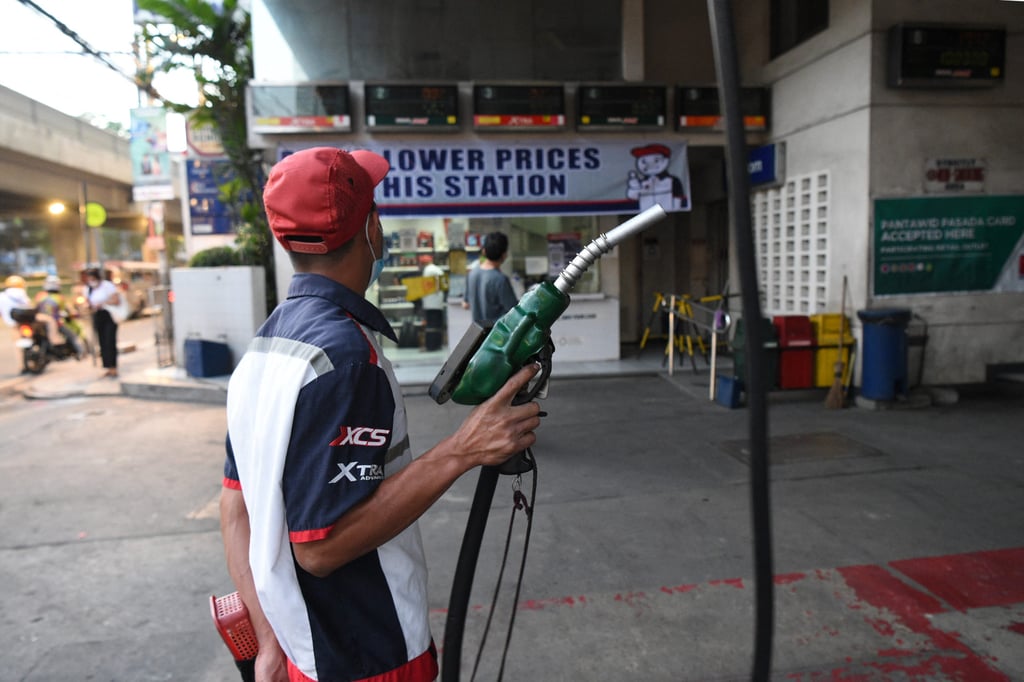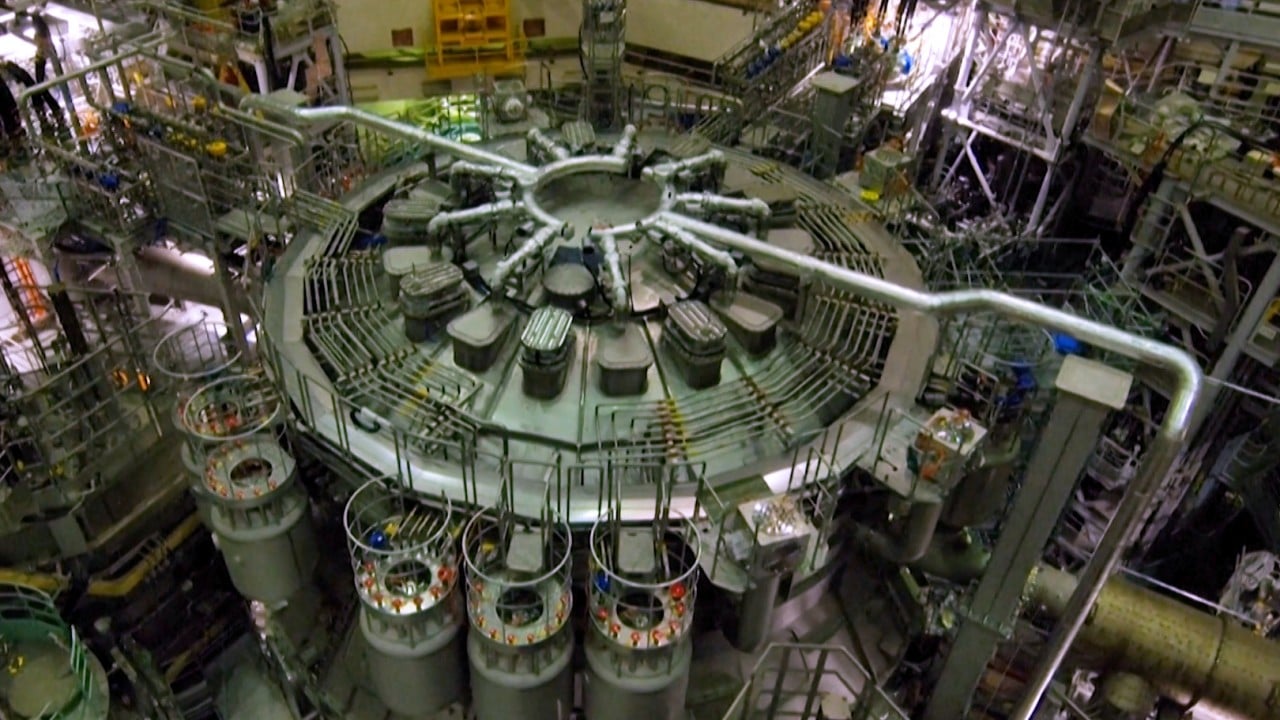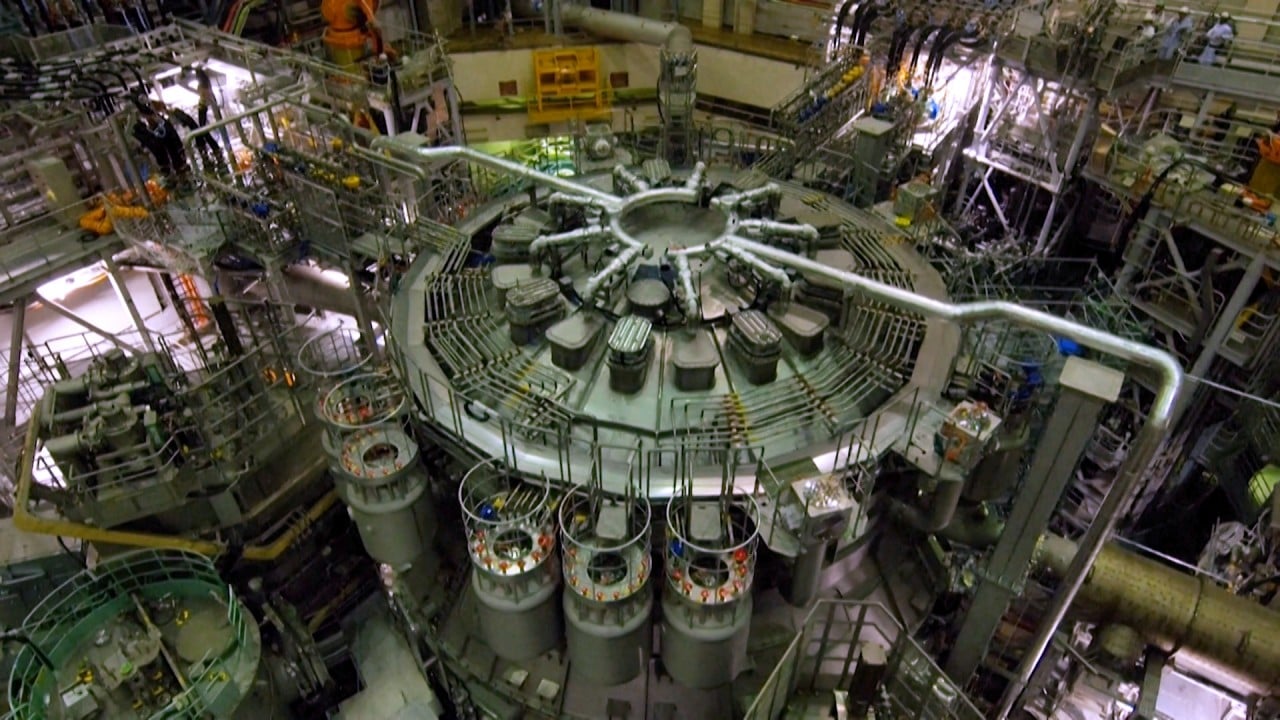Singapore’s recently signed nuclear energy pact with the US, aimed at exploring the technology’s potential to meet the city state’s energy challenges, comes amid a broader revival in interest to harness atomic power in a region still reliant on natural gas and coal.
“Nuclear energy is a solution for deep decarbonisation of [Singapore’s] economy, as well as a viable solution for energy security given that more than 95 per cent of its current resources to generate electricity are imported,” said Alvin Chew, a senior fellow at the S. Rajaratnam School of International Studies.
On Wednesday, Singapore and the US signed the deal, known as a 123 Agreement, to deepen cooperation on the peaceful use of nuclear energy as the city state weighs clean energy alternatives as part of its efforts to achieve net-zero carbon emissions by 2050.
The pact was signed by US Secretary of State Antony Blinken, who was visiting the island nation as part of an 11-day tour of Asia, and Singapore Minister for Foreign Affairs Dr Vivian Balakrishnan.
“This agreement builds on the long-standing civil nuclear collaboration between the United States and Singapore and outlines a comprehensive framework to deepen peaceful nuclear cooperation based on a mutual commitment to nuclear non-proliferation,” the two countries said in a joint statement on Wednesday.

The agreement is expected to come into full force by the end of the year, after it is reviewed by the US Congress.
Lasting 30 years, the pact will give Singapore access to detailed information on American nuclear energy technologies and expertise that are under export controls.
Singapore is a key player in the global semiconductor industry and relies heavily on petroleum and natural gas, which represent around 85 per cent and 13 per cent of its primary energy consumption respectively.
The US-Singapore agreement comes as many countries in Asia turn to nuclear power as an alternative energy source.
Last year, the Philippines and the US agreed to train Filipinos to build and operate nuclear power plants, just months after signing the landmark Civil Nuclear Cooperation Agreement in November.
The deal allows Washington to export nuclear technology and material to Manila, promoting the power-hungry Philippines’ decarbonisation and energy independence efforts.
Meanwhile, Thailand was exploring small modular nuclear technology as part of broader efforts to diversify its energy mix, the kingdom’s prime minister said in May.
“Our green transition goal is one of the most ambitious in Southeast Asia, and we have a comprehensive road map in place to have 50 per cent of energy production be renewable by 2040,” Prime Minister Srettha Thavisin said in a speech in Bangkok.

In Indonesia, the government has announced plans to incorporate nuclear energy and nuclear power plants into its energy mix by 2039 under its ambitious road map to achieve net-zero emissions by 2060.
Jakarta also began looking into two sites – in West Kalimantan and Bangka-Belitung islands – to develop its nuclear power plants last year.
Sharon Seah, senior fellow at the ISEAS – Yusof Ishak Institute’s Climate Change in Southeast Asia Programme, said Singapore could also play an important role in enhancing regional nuclear safety knowledge as neighbouring countries mull its use as an alternative energy source.
While Singapore has not reached a decision on the deployment of nuclear energy, it has made moves to explore the technology and its implications.
“Any decision to deploy new energies requires consideration and demonstration of its safety, reliability, affordability and environmental sustainability of nuclear energy in our local context,” its trade and environmental ministries said in a joint fact sheet.
In 2022, a report about the city state’s energy future, which was commissioned by its Energy Market Authority, revealed that nuclear energy could supply around 10 per cent of Singapore’s energy needs by 2050.

Nuclear engagement
Countries that want to engage with the US in civil nuclear cooperation must adhere to a set of non-proliferation requirements to ensure that the information obtained through this agreement will only be used for peaceful purposes.
This entails committing to the peaceful use of nuclear energy, adhering to standards laid out by the International Atomic Energy Agency and restricting the enrichment, reprocessing and re-transfer of these materials and equipment.
Singapore is joining a list of 24 other countries that have signed 123 Agreements with the US, such as China, India, Indonesia, Japan and the Philippines.
In signing this pact and taking part in other capacity-building initiatives, the two countries plan to “further strengthen civil nuclear cooperation to better understand how advanced nuclear energy technologies, including small modular reactors, can potentially support climate goals, while balancing critical energy needs”, said the statement.
Through one such initiative, the US’ Foundation Infrastructure for the Responsible Use of Small Modular Reactor Technology – or FIRST – programme, Singapore could also better understand small modular reactors or more advanced nuclear energy technologies, the statement added.
Experts who spoke to This Week in Asia were quick to underscore the need to explore nuclear technologies as an alternative energy source for Singapore, especially given that it is “energy-challenged”.
“It is certainly an option for countries caught in the clean energy transition and the race to limit our temperature increase to 1.5 degrees. For an alternative energy-challenged country like Singapore with limited wind, solar, geothermal sources, nuclear energy may be an option,” said Seah from the ISEAS – Yusof Ishak Institute.
Chew from RSIS stressed that “Singapore needs to consider all options to strengthen its energy security profile as well as balancing its decarbonisation efforts”, pointing out that almost all of its resources to generate electricity are imported.
Allaying concern that the presence of these technologies could lead to nuclear proliferation or result in instability, experts stressed that the 123 Agreement is a non-proliferation agreement which seeks to ensure that Singapore abides by the peaceful use of nuclear energy and materials.
Chew pointed out that there are no active nuclear power plants in the region and that Southeast Asia is a nuclear weapons-free zone, thus there will be “little proliferation concern on non-peaceful nuclear applications”.
“Also, Singapore has no aspiration in non-peaceful application of nuclear energy. In fact, the 123 Agreement will help to narrow down the technologies and areas whereby Singapore can focus on when building up its capability,” he added.
This agreement instead would allow Singapore to enhance its capability building in the area of nuclear science and safety and learn about Small Modular Reactor technology, said Seah.
“It will also allow for local institutions including academia, businesses, and government entities to collaborate with US civil nuclear knowledge partners in other countries.”



